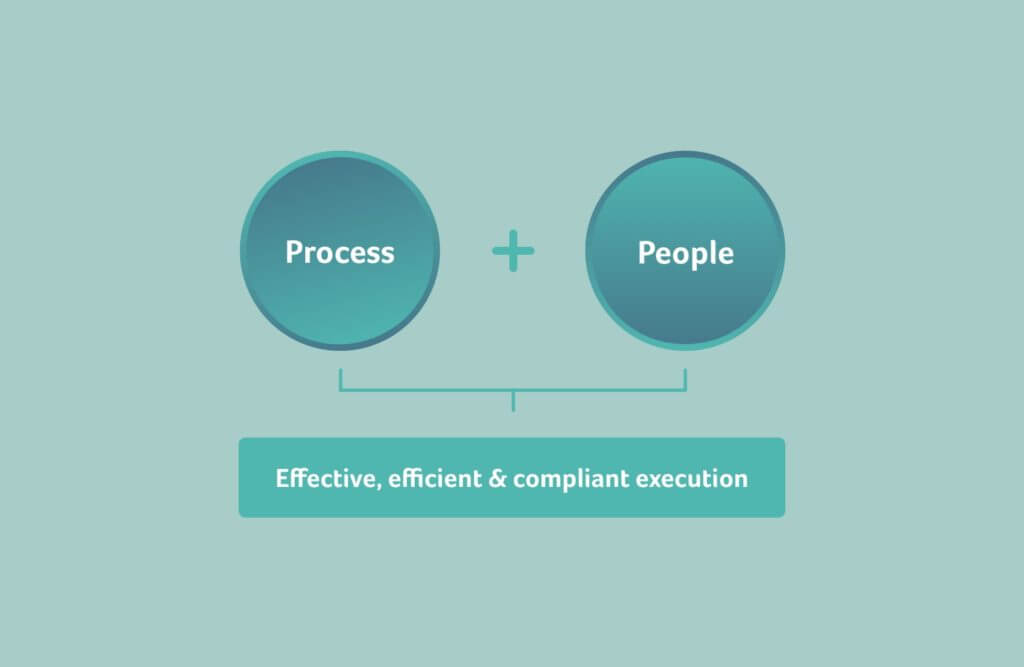Many quality improvement projects aim to enhance one or more processes to become more effective, efficient, or compliant – often all three. Whilst compliance is achieved in such projects, an improvement in effectiveness and efficiency is frequently found lacking.
That said, there are also quality improvement projects where all three aims (improved effectiveness, efficiency, and compliance) are achieved sustainably so that the improved state is maintained over time. The key difference is that these successful projects have been treated as either a change project, or a transition program.
In our topical article below, our Head of Quality Dr Dirk Hüber shares some essential advice on utilising change management to facilitate the successful implementation of sustainable quality improvement.
The importance of change & transition in quality improvement
Change projects aim to improve the current situation. They have clear targets and a well-defined scope. Transition programs on the other hand seek to shape the future. They have a more open scope, interpretable targets, and can affect an organisation’s values.
To understand why change and transition are so important in quality improvement, we must first understand how quality is created. There are two ingredients required for the successful creation of quality: process, and people.

Although a poor process in itself can be an obstacle, a good process alone, regardless of how perfect it might be, will never lead to improved execution. The people who must live the process need to change as well. It’s important to consider, that “living” the process in this context does not just mean that employees are adequately trained on the improved process – it involves cultural change.
The human factor
Quality is a habit, and habits are adopted behaviours. Doing things effectively (and not half-heartedly), doing things efficiently (and not creating unnecessary formal hurdles), and complying with regulations (not taking short cuts) are all habits that people choose whether to embrace. Deciding to always find the right balance between these three aspects is also a chosen behaviour. In other words, quality is a question of mindset.
And therefore, quality can only be achieved sustainably if it is embedded within an organisation’s culture. Accordingly, if a process is improved, the organisation’s culture needs to change to some extent – in some cases, a cultural transformation is even needed. With such a cultural change or transformation, the habitual behaviour and mindset of a company’s people will change over time.
As such, every quality improvement project involves cultural change within an organisation.
Managing change
Treating a quality improvement project as a change project is not a guarantee for success. Indeed, only about 20% of all change and transition projects are fully successful. Here at Congenius, we have successfully implemented sustainable change within various organisations. Based on our experience, below are what we consider to be the essential success factors:
1. Ensure top management leads from the front
Top management must understand why change is needed, have the willingness to change, provide the resources necessary to support the change, and actively promote the change. The project sponsor should be from top management, and the entire top management team should act as role models for the change project – living the intended behaviours and culture.
Change projects without public commitment from top management are very likely to fail, so robust promotion of the change should happen at project inception and continue throughout each project stage.
At the beginning of the project, top management should clearly communicate the reasons for the change and the expectations for the project, as well as expressing their full support. During the project, intermediate goals and successes achieved should be acknowledged, and due pressure applied when necessary.
If a change is initiated externally (e.g., due to critical audit findings), and the organisation is “forced” to change, it is essential that top management authentically communicates their support of the change for intrinsic reasons, and not only because of external pressure.
2. Appoint an accomplished project lead
In addition to the required subject matter expertise, the appointed project lead needs to be experienced and skilled in change management – or have access to an experienced mentor if leading a change project for the first time.
The project lead must have direct access to top management and should be able to effectively communicate across all levels of the organisation’s hierarchy. They also need to be a strong moderator as well as a pragmatic mediator in conflicting situations.
3. Get middle management on board
It’s important that affected middle managers actively support the change project, and it is the task of top management to ensure this support. Middle management must allocate the required resources within each of the manager’s areas of responsibility.
Furthermore, the project lead should onboard one or two middle managers to act as change promoters within the project. Other employees might also be won as change promoters and project supporters.
4. Listen, story-tell & find a solution
To convince people of the change, and thus eventually achieve the change, the following conduct is essential:
Listening
When you want someone to buy into the change, you should allow them to do 80% of the talking. It is only by listening to a sceptic or opponent that gives you a chance of winning them over. And should you not completely convince them to “join the movement”, you will at least gain some level of acceptance that may soften them towards the change.
Storytelling
Once you have listened to all another person has to say, you may start with storytelling.
At the beginning of the project, you should share success stories of other change projects dealing with similar situations. These stories should explain the challenges and how they were overcome. They may mention pitfalls and mistakes, but they should always communicate the successful solution.
As the project progresses, your stories should communicate the project successes in line with the intermediate goals defined at the project onset, so that progress is made visible to the organisation.
The purpose of storytelling is to show that change is possible, that there are solutions, and that the company’s aims can be achieved. Over time, authentic success stories will build trust and confidence within the organisation, and those who participated in the successful steps will become project advocates who start to proudly tell their own stories.
Finding a solution
To achieve the change required for quality improvement, the project team does not only have to find solutions for the issues that prompted the project, but also for the many little challenges that arise along the way.
The essential point to note here, is to not focus on finding the perfect solution for a problem, rather on finding a workable solution. This proposed solution can then be discussed with stakeholders, before being refined and adapted. To this end, an “80%” solution is usually sufficient.
Should somebody disagree with the proposed solution, they are of course free to propose an alternative path, which then may be discussed. However, refusal without an alternative proposal should not be accepted.
A solution may also be found through the project team enabling stakeholders to problem solve by themselves – for example, with guidance, by asking questions, through moderating workshops, and by mediating between conflicting interests.
To summarise, strong leadership and clear communication are the two fundamental pillars for successful change projects or transition programs, and in turn, are key to achieving long-term, sustainable quality improvement.
Should you have a challenge related to change management, our Quality team is ready and happy to help. Simply get in touch to start the conversation.

